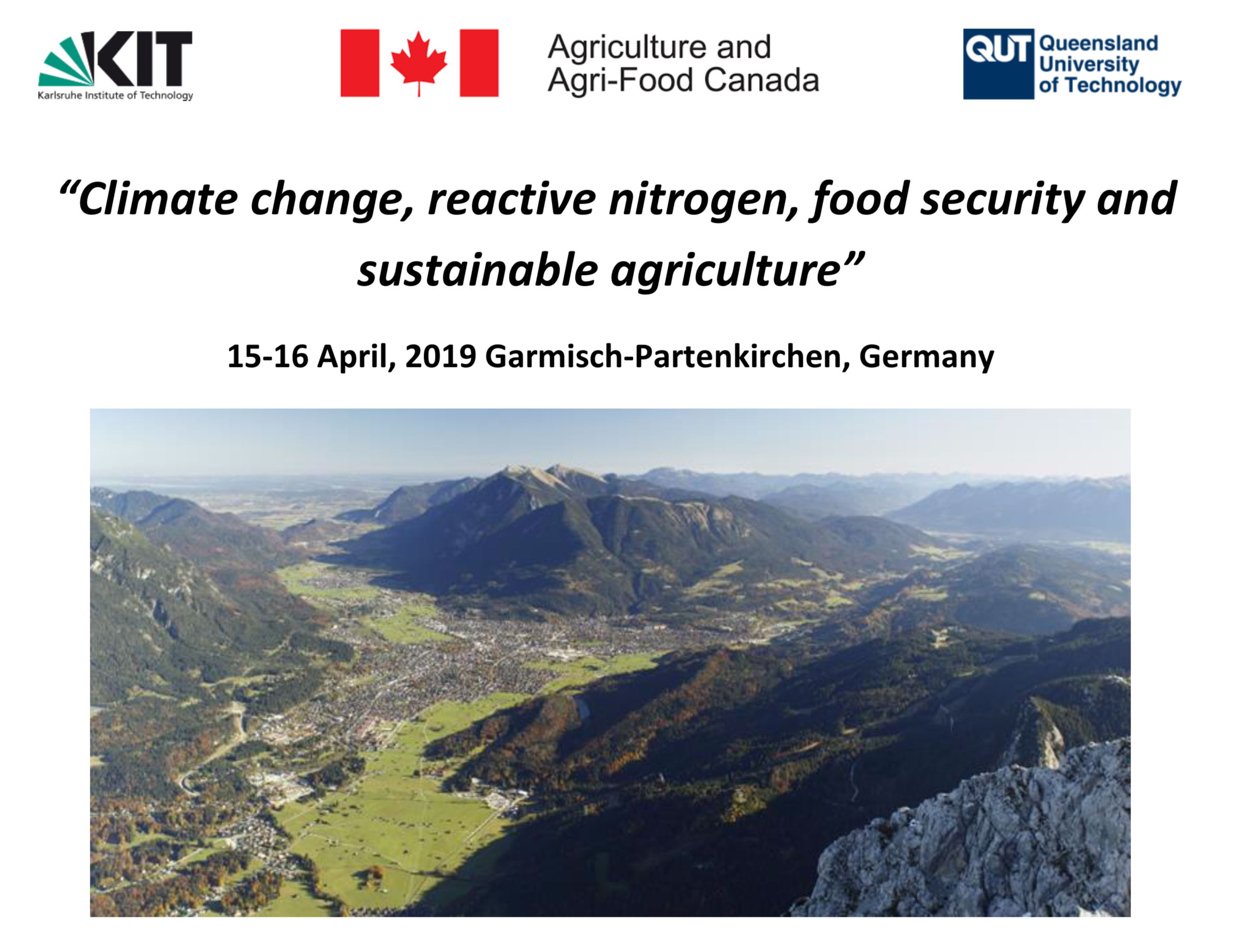Workshop presentations
"Nitrogen: A Climate Strategy for a Post-Trump World"
by Dr David Kanter, New York University, USA.
By clicking on the button below, data is loaded from external servers.
“Global budgets of nitrous oxide under GCP/INI, the contribution of the global N2O intercomparison project, and refinements to regionally assess diverse drivers, fluxes, and impacts (RECCAP-2)”
by Dr Wilfried Winiwarter IIASA, Laxenburg, Austria.
“Climate change, reactive N, denitrification and N2O: identifying sustainable solutions for the globe”
by Prof Klaus Butterbach-Bahl, Institute of Meteorology and Climate Research, Germany.
By clicking on the button below, data is loaded from external servers.
“Importance of accurate activity data for national GHG inventory reporting”
by Prof Stephen Ogle, Colorado State University, USA.
“The Australian National Agricultural Nitrous Oxide Research Program”
by Dr Clemens Scheer, KIT IMK-IFU, Germany.
By clicking on the button below, data is loaded from external servers.
“How can microbiologists help with N2O mitigation?”
by Prof Lars Bakken, Norwegian University of Life Sciences.
By clicking on the button below, data is loaded from external servers.
”N2O emissions from grazing lands”
by Prof Tim Clough, New Zealand, Lincoln University.
By clicking on the button below, data is loaded from external servers.
“Denitrification from manure deposited by grazing livestock“
by Dr Laura Cardenas, Rothamsted Research, UK.
„Cover crop residues as driver for N2O emissions - mechanisms and mitigation“
by Dr Søren O. Petersen, Aarhus University, Denmark.
By clicking on the button below, data is loaded from external servers.
“N2O fluxes during freeze/thaw”
by Prof Claudia Wagner-Riddle, University of Guelph, Canada.
By clicking on the button below, data is loaded from external servers.
“Hotspots of N2O production”
by Prof Elizabeth Baggs, University of Edinburgh, UK.
“The role of biological nitrification inhibitors in reducing N losses from agriculture”
by Dr Guntur Venkata Subbarao, International Research Center for Agricultural
Sciences, Japan.
By clicking on the button below, data is loaded from external servers.
“Modelling approach for identifying management practices that reduce GHG emissions from cropping systems in Canada“
by Dr Ward Smith, Agriculture and Agri-Food Canada.
By clicking on the button below, data is loaded from external servers.
“Modelling denitrification and N2O emissions from fertilised cropping systems using DayCent“
by Dr Stephen DelGrosso, USDA ARS, USA.
By clicking on the button below, data is loaded from external servers.
“Modeling and mapping N2O emissions at the landscape scale”
by Dr Raia Massad, INRA, France.
By clicking on the button below, data is loaded from external servers.
„Comparison of APSIM and DNDC when predicting N2O emissions from urine patches”
by Dr Iris Vogeler, Aarhus University, Denmark.
By clicking on the button below, data is loaded from external servers.
"Improving global N2O emission estimates through the use of a global N2O database"
by Dr Chris Dorich, Colorado State University, USA.
By clicking on the button below, data is loaded from external servers.
”Importance of sampling frequency in reducing uncertainty”
by Dr Louise Barton, University of Western Australia.
”Upscaling N2O fluxes from plot to region”
by Prof Ute Skiba, Centre for Ecology and Hydrology, UK.
“N2O fluxes from smallholder, African farms”
Dr Sonja Leitner, International Livestock Research, Kenya.
By clicking on the button below, data is loaded from external servers.
“Measuring denitrification and N turnover from fertilised cropping systems using stable isotopes”
by Dr Johannes Friedl, Queensland University of Technology, Australia.
By clicking on the button below, data is loaded from external servers.


 Workshop programme
Workshop programme